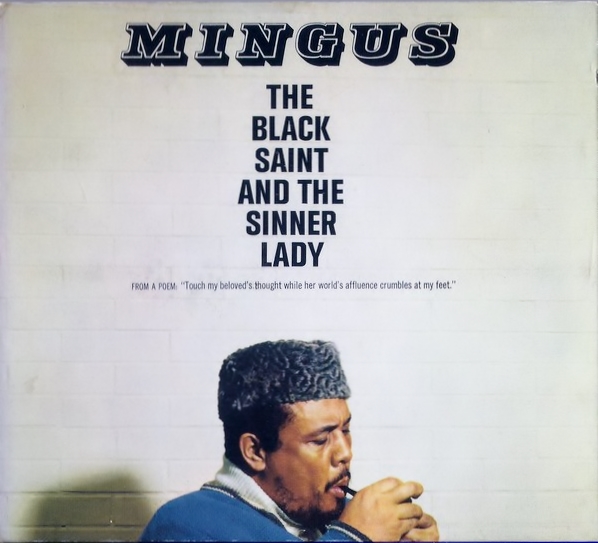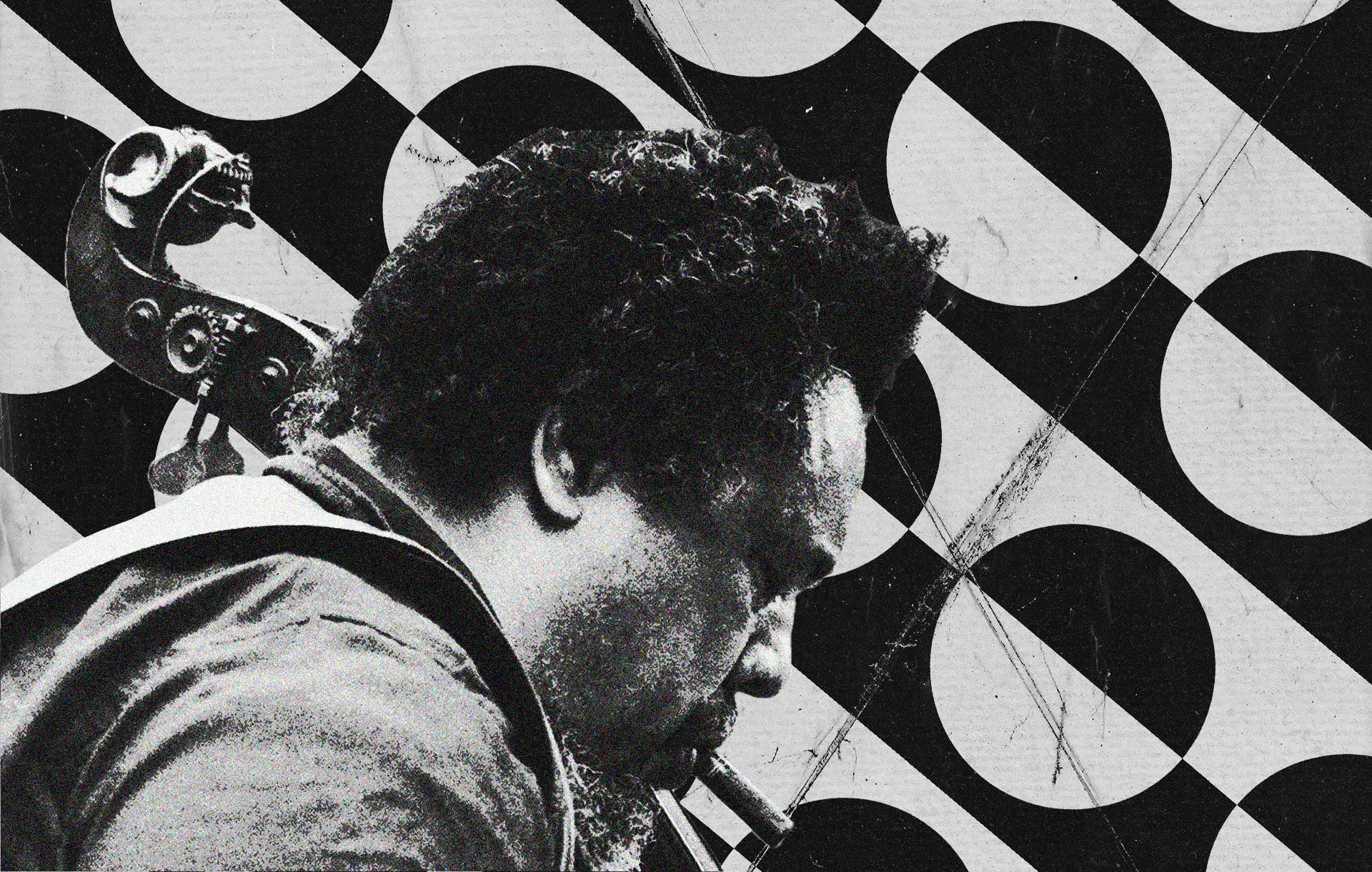It is the centenary year (2022) of Charles Mingus‘ birthday. There are a number of epithets you can tie to this man’s name ― one of the greatest jazz composers (and a classical music composer too), double bassists, pianists, and band leaders. Oh, and thinkers too. Yet there is one that practically encompasses all of the above ― music genius incarnate. Or, simply, one of the greatest music thinkers of the twentieth century.
As Sophia Alexandra Hall notes in her Mingus essay for Classic.fm, at one point, Mingus himself asks a question: “What is a jazz composer?” This was the first sentence of the liner notes of his 1970 album, Let My Children Hear Music.
Simply, one of the greatest music thinkers of the twentieth century
“When a jazz musician begins to ad lib on a given composition with a title and improvise a new creative melody, this man is taking the place of a composer.
“He is saying, ‘listen, I am going to give you a new complete idea with a new set of chord changes. I am going to give you a new melodic conception on a tune you are familiar with. I am a composer.’ That’s what he is saying.”
And in just those few sentences, Charles Mingus easily explains his concept of music, something he spread over more than a hundred albums he shared over his entire career.
It All Started in Nogales and Watts
Born Charles Mingus Jr. in 1922, in Nogales, Arizona, and raised in Watts, California, Mingus was a prodigiously talented musician from an early age. His father Charles Sr. was a Chinese-American photographer who encouraged his son’s musical talent; while his mother, Harriet Parks, was an African-American singer with an extensive operatic repertoire. Charles Jr. would often listen to and imitate his mother’s singing while she practiced at home ― an experience that would have a profound effect on his later compositions.
Mingus attended Watts High School where he met future collaborators John Lewis and Dizzy Gillespie
Mingus started playing the piano at age eight and the cello at age eleven, but it was the double bass that he truly fell in love with. He developed his own unique style of playing, one that incorporated elements of both the jazz and classical traditions.
Mingus attended Watts High School where he met future collaborators John Lewis and Dizzy Gillespie. He also met Charles McPherson, who would become one of his closest friends and musical partners. After high school, Mingus enrolled at Los Angeles City College intending to study pharmacology. But music quickly took over, and he began playing in local clubs with the likes of Dexter Gordon, Charles Lloyd, and Lionel Hampton. He also started composing his own pieces ― many of which would go on to become jazz standards.
Mingus and the Birth of Bebop
In 1943, Mingus was drafted into the army and stationed in Hawaii. It was there that he first encountered bebop: a new style of jazz that was being pioneered by musicians like Dizzy Gillespie and Charlie Parker. Bebop was characterized by its fast tempo, complex harmonies, and improvisation. It was the perfect outlet for Mingus’ prodigious musical talents.
After his discharge from the army, Mingus returned to Los Angeles and quickly became one of the leading figures in the bebop scene. He started his own band, The Charles Mingus Quintet, and began touring with other leading bebop musicians.
As his official bio on the Charles Mingus site explains, eventually, he settled in New York, recording and playing with the leading musicians of the 1950s and the bebop era: Charlie Parker, Miles Davis, Bud Powell, Art Tatum, and one of Mingus’ key jazz influences, Duke Ellington.
It was during this period that Mingus started to develop his own unique style of composition, one that would come to be known as “the Charles Mingus sound.” His compositions were often complex and dissonant, but they also had a deep emotional core. They were sometimes dark and brooding, but also full of hope and possibility.
By the mid-50s he had formed his own publishing and recording companies to protect and document his growing repertoire of original music. He also founded the “Jazz Workshop,” a group that enabled young composers to have their new works performed in concert and on recordings.
It was sometime around that point in which Mingus stepped to the forefront of the musical avant-garde.
Mingus as the Bandleader, Composer, and Thinker
In the 1960s, Mingus became more interested in larger-scale composition and orchestration. He also began working with symphony orchestras, incorporating classical elements into his music. This was the period that produced some of his best, extraordinary pieces of music, which include Pithecanthropus Erectus, The Clown, Tijuana Moods, Mingus Dynasty, Mingus Ah Um, The Black Saint and the Sinner Lady, Cumbia and Jazz Fusion, and Let My Children Hear Music.

Colin Fleming, the author of Sam Cooke: Live at the Harlem Square Club, 1963, in discussing Mingus’ compositional style notes that he came up with “tunes that represented a kind of cumulative copestone to his career denounced machinations; they went straight through you, for you. In other words, Mingus’ message of individualism brokered no artifice. This is music that’s a veritable body blow for the soul, on behalf of truth and being what you say you are.”
“Mingus was a modernist steeped in jazz history. To be steeped in jazz history is to be steeped in the history of America. It’s all in there with jazz: racial oppression, the fight for a voice, the striving hope of work songs and spirituals in the field, the hard-won ascent to something better. Mingus’ music contains the sonic upheaval that was to be found in Louis Armstrong’s legendary Hot Fives & Sevens recordings, the mercurial futurism of Charlie Parker, and the sophisticated, neo-classical élan of Duke Ellington. Simply put, he got it and his music still gets it.”
The Epitaph
Getting back to Fleming, he says that “Mingus had the courage of a James Baldwin, a Muhammad Ali, a Sam Cooke ― artists of the civil-rights movement who could no more pull a punch than take a dive. His best art bristles with an intensity one rarely finds in the genre that is arguably America’s only indigenous art form. To hear him with his sextet during his annus mirabilis of 1964 is to hear perhaps the finest small band there ever was.”
Mingus continued to perform and tour throughout the 1970s, despite his declining health. He died of Lou Gehrig’s disease in 1979. His wife, Sue Graham Mingus, scattered his ashes in the Ganges River in India. Both New York City and Washington, D.C. honored him posthumously with a “Charles Mingus Day.”
As his official biography points out after his death, the National Endowment for the Arts provided grants for a Mingus foundation created by Sue Mingus called “Let My Children Hear Music” which cataloged all of Mingus’ works.
During this cataloging process, Mingus’ masterwork, “Epitaph,” a composition that is more than 4000 measures long and which requires two hours to perform, was discovered.
The New Yorker wrote that “Epitaph” represents the first advance in jazz composition since Duke Ellington’s “Black, Brown, and Beige,” which was written in 1943. The New York Times said it ranked with the “most memorable jazz events of the decade.” Convinced that it would never be performed in his lifetime, Mingus called his work “Epitaph,” declaring that he wrote it “for my tombstone.”
But “Epitaph” was eventually performed in 1989, 10 years after Mingus’ death, by the 75-piece Symphonic Jazz Orchestra at New York’s Lincoln Center. The piece was so long that it had to be performed over two nights. It received a standing ovation both nights.
Mingus’ masterwork, “Epitaph,” a composition that is more than 4000 measures long and which requires two hours to perform
In 2002, the Charles Mingus Big Band won a Grammy for best large jazz ensemble performance for their recording of “Epitaph.” The album also won the best historical album.
Mingus has been gone for almost 40 years, but his music and legacy continue to inspire and amaze fans and musicians around the world.
In one of his most quoted interviews, with the producer Nesuhi Ertegun, Mingus explained that the smoldering, sizzling force of his music was a reflection of everything happening inside. “What I’m trying to play is very difficult, because I’m trying to play the truth of what I am,” Mingus said. “The reason why it’s difficult — it’s not difficult to play the mechanics of it — it’s because I’m changing all the time.”
Charles Mingus was one of the most important and influential composers of twentieth-century music. He was a true pioneer, who pushed the boundaries of jazz and classical music to create a unique and powerful sound that is still being explored by musicians today.





